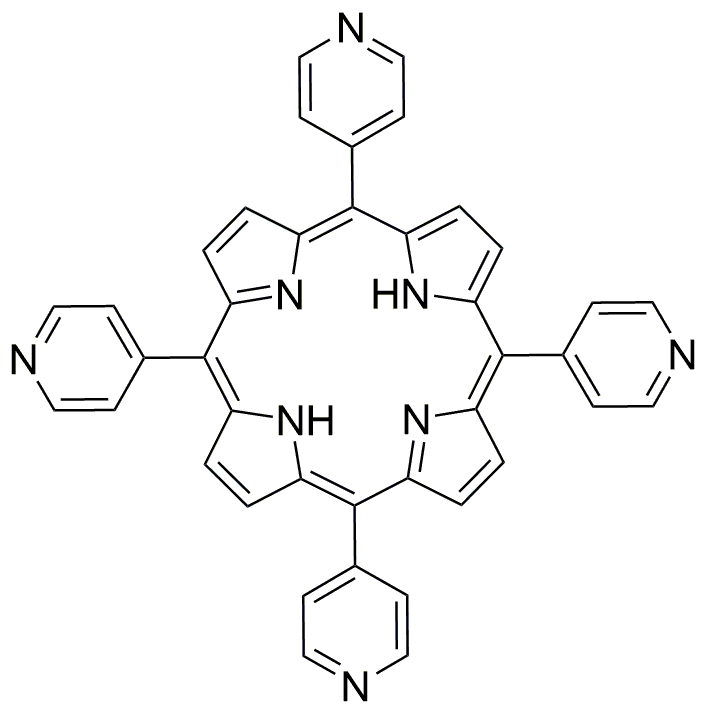5,10,15,20-Tetra(4-pyridyl)porphyrin is widely utilized in research focused on:
- Photodynamic Therapy: This compound is effective in cancer treatment, where it can be activated by light to produce reactive oxygen species that selectively kill cancer cells.
- Solar Energy Conversion: It plays a crucial role in the development of dye-sensitized solar cells, enhancing the efficiency of converting sunlight into electricity.
- Catalysis: Used as a catalyst in various chemical reactions, it improves reaction rates and selectivity, making processes more efficient in the chemical industry.
- Sensors: Its unique properties allow for the development of sensors that can detect metal ions or gases, which is valuable in environmental monitoring and safety applications.
- Biomedical Imaging: This compound is utilized in imaging techniques, providing contrast in various medical imaging modalities, thus aiding in disease diagnosis and monitoring.
General Information
Properties
Safety and Regulations
Applications
5,10,15,20-Tetra(4-pyridyl)porphyrin is widely utilized in research focused on:
- Photodynamic Therapy: This compound is effective in cancer treatment, where it can be activated by light to produce reactive oxygen species that selectively kill cancer cells.
- Solar Energy Conversion: It plays a crucial role in the development of dye-sensitized solar cells, enhancing the efficiency of converting sunlight into electricity.
- Catalysis: Used as a catalyst in various chemical reactions, it improves reaction rates and selectivity, making processes more efficient in the chemical industry.
- Sensors: Its unique properties allow for the development of sensors that can detect metal ions or gases, which is valuable in environmental monitoring and safety applications.
- Biomedical Imaging: This compound is utilized in imaging techniques, providing contrast in various medical imaging modalities, thus aiding in disease diagnosis and monitoring.
Documents
Safety Data Sheets (SDS)
The SDS provides comprehensive safety information on handling, storage, and disposal of the product.
Product Specification (PS)
The PS provides a comprehensive breakdown of the product’s properties, including chemical composition, physical state, purity, and storage requirements. It also details acceptable quality ranges and the product's intended applications.
Certificates of Analysis (COA)
Search for Certificates of Analysis (COA) by entering the products Lot Number. Lot and Batch Numbers can be found on a product’s label following the words ‘Lot’ or ‘Batch’.
Numéro de catalogue
Numéro de lot/série
Certificates Of Origin (COO)
This COO confirms the country where the product was manufactured, and also details the materials and components used in it and whether it is derived from natural, synthetic, or other specific sources. This certificate may be required for customs, trade, and regulatory compliance.
Numéro de catalogue
Numéro de lot/série
Safety Data Sheets (SDS)
The SDS provides comprehensive safety information on handling, storage, and disposal of the product.
DownloadProduct Specification (PS)
The PS provides a comprehensive breakdown of the product’s properties, including chemical composition, physical state, purity, and storage requirements. It also details acceptable quality ranges and the product's intended applications.
DownloadCertificates of Analysis (COA)
Search for Certificates of Analysis (COA) by entering the products Lot Number. Lot and Batch Numbers can be found on a product’s label following the words ‘Lot’ or ‘Batch’.
Numéro de catalogue
Numéro de lot/série
Certificates Of Origin (COO)
This COO confirms the country where the product was manufactured, and also details the materials and components used in it and whether it is derived from natural, synthetic, or other specific sources. This certificate may be required for customs, trade, and regulatory compliance.


